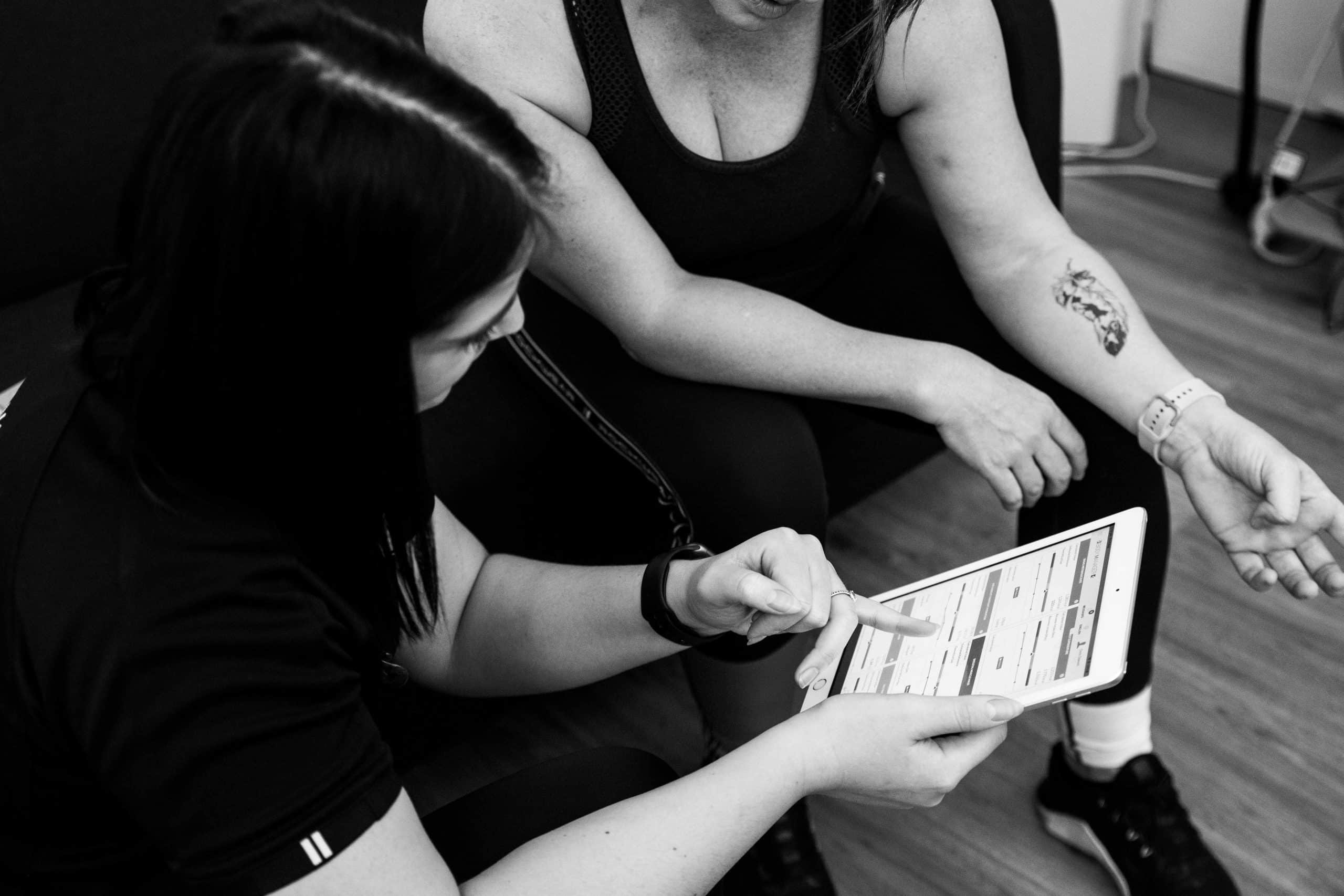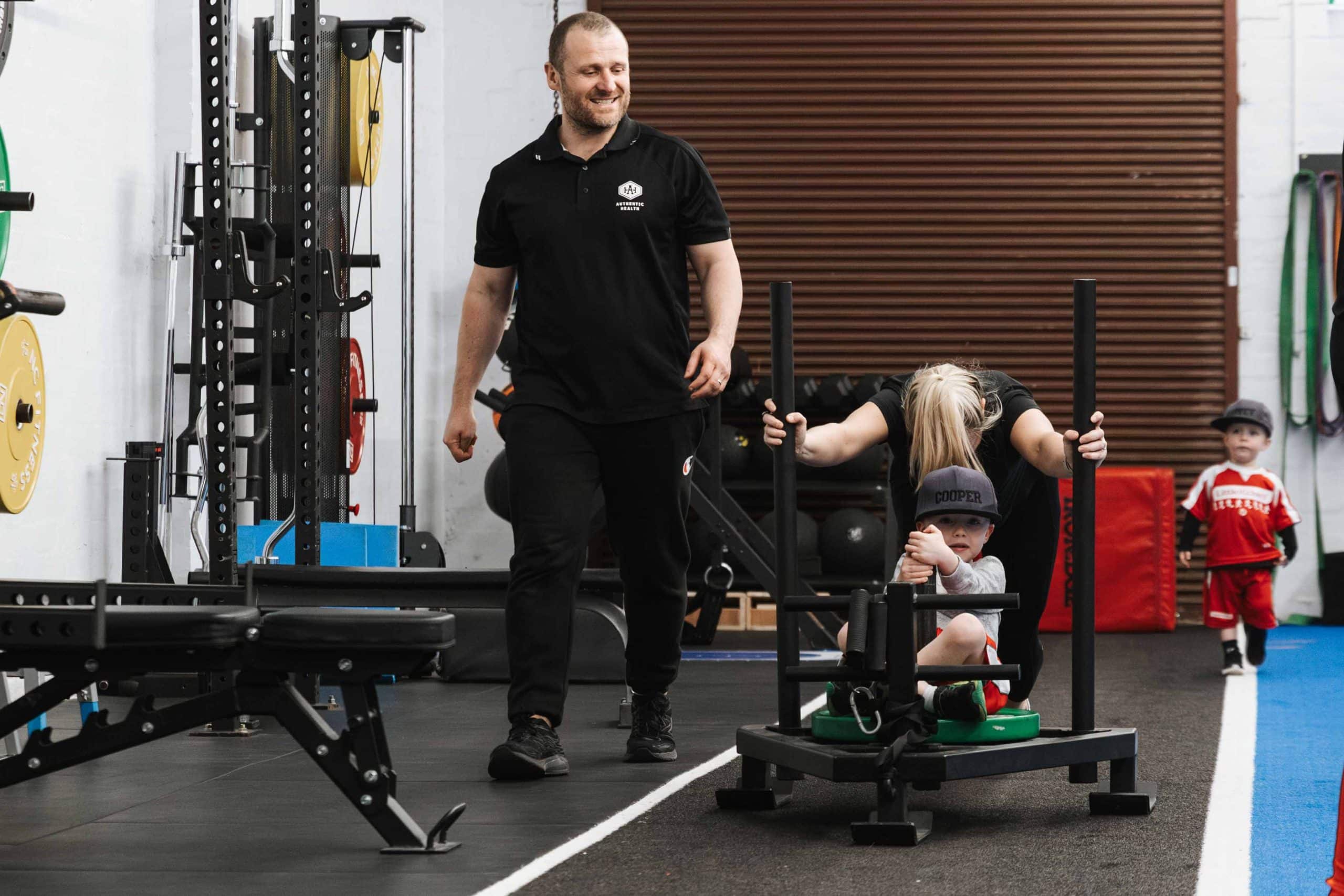Women’s fitness often come with a lot of questions. From the best types of training to understanding how hormones affect weight, it’s essential to have reliable information to make informed decisions about your fitness journey. In this blog, we’ll answer the top seven most common women’s health and fitness questions that we hear from our clients.
1. What Type of Training is Best for Women?
The best type of training for women largely depends on individual goals, fitness levels, and preferences. However, we generally recommend all of our clients do a combination of strength training, cardio, and mobility.
Strength Training: This type of training will help build muscle, improve metabolism, balance hormones and enhance bone density, which is particularly important for women to prevent osteoporosis.
Cardio: Workouts such as running, cycling, and HIIT (High-Intensity Interval Training) improve cardiovascular health, burn calories, and boost overall fitness.
Mobility: Incorporating yoga, pilates, or stretching helps improve flexibility, reduces the risk of injury, and promotes mental well-being
Mixing these types of training ensures a balanced approach, targeting different aspects of fitness and overall health.
2. Is It Harder for Women to Get Fit?
The short answer is no, not necessarily. Women may face unique challenges in their fitness journey, but this doesn’t mean it’s harder—just different. Factors like hormones, metabolism, and body composition can affect how women gain muscle and lose fat compared to men.
Hormones: Hormonal fluctuations, especially around menstrual cycles, pregnancy, and menopause, can impact energy levels, water retention, and fat distribution.
Body Composition: On average women have 6 to 11 percent more body fat than men, which can make fat loss appear slower. However, consistency and a tailored approach to diet and exercise can help you achieve amazing results.
Muscle Mass: Women generally have less muscle mass than men, which can affect how quickly they gain strength. However, with proper training and the right nutrition, women can still build muscle effectively.
Ultimately, with dedication, the right approach, and a focus on personal goals, women can achieve their fitness goals.
3. Should Women Do Cardio or Strength Training?
As stated above, both cardio and strength training are beneficial to women as each serves a different purpose. Rather than choosing one over the other, incorporating both into your fitness routine we see you achieve optimal results. Both forms of exercise play crucial roles in a balanced fitness routine, and each offers unique benefits that contribute to overall health, fitness, and well-being.
Cardio improves cardiovascular health and endurance while strength training builds muscle and supports a healthy metabolism. In terms of fat loss, strategic cardio can help burn extra calories but chronic cardio can have the opposite effect, so getting your quantities right as a woman is essential. Strength training helps preserve muscle mass while you lose weight, which keeps your metabolism higher. The combination of strategic cardio, strength training and a tailored nutrition plan is most effective for weight management.
Focusing solely on one type of exercise can lead to imbalances and missed benefits, so incorporating both is key for a well-rounded fitness routine.
4. How Long Does It Take to See Results from Working Out as a Female?
Seeing results from working out varies greatly depending on your starting point, consistency, and the type of training you’re doing. However, here’s a general timeline:
2-4 Weeks: Initial changes like improved mood, increased energy, and better sleep.
4-8 Weeks: Physical changes such as improved strength, endurance, and muscle tone may start to become noticeable.
3-6 Months: Significant changes in body composition, weight loss, and muscle definition are typically evident.
Consistency, nutrition, mindset and recovery are crucial factors in seeing and maintaining results.
5. What Makes Females Gain Weight?
Weight gain in women can be influenced by various factors, including:
Hormonal Changes: Menstrual cycles, pregnancy, and menopause can lead to weight gain due to shifts in hormone levels affecting appetite and fat storage.
Stress and Sleep: High stress and poor sleep can increase cortisol levels, leading to cravings and weight gain, particularly around the abdomen.
Sedentary Lifestyle: Lack of physical activity is a significant contributor to weight gain, as it reduces calorie expenditure.
Diet: Poor dietary habits, like high sugar intake and overeating, can contribute to weight gain. Mindful eating and balanced nutrition are key to maintaining a healthy weight
6. Does Exercise Help Menopause?
Yes, exercise plays a significant role in managing menopause symptoms and improving overall quality of life during this transition. Menopause is a natural phase in a woman’s life marked by hormonal changes, including decreased estrogen levels, which can lead to various physical and emotional symptoms. Regular physical activity can help alleviate many of these symptoms, support overall health, and promote a sense of well-being.
Exercise reduces weight gain by boosting metabolism and reducing fat. It also increases endorphin levels which can combat the mood swings and anxiety that is often associated with menopause. It can also help to reduce the number of hot flushes experienced during menopause.
7. Does Lifting Weights Make Women Bulky?
This is a very common myth which often causes women to avoid incorporating strength training into their routines. The reality is that women have a very different hormonal make up than men which means that they do not gain muscle as easily. Women have significantly less testosterone, along with different levels of progesterone and estrogens which is believed to help regulate womens muscle mass. Muscle is more likely to add definition than bulk as lifting weights helps burn fat and build lean muscle.
The “bulky” look that many women fear is often due to increased body fat, not muscle. Strength training, when paired with a healthy diet, can help decrease body fat percentage, leading to a fit and toned appearance.
Navigating the world of women’s health and fitness can feel overwhelming, but understanding these key aspects can set you on the right path. By focusing on a balanced exercise routine and committing to consistency, women can achieve and maintain optimal health and fitness at any stage of life. Find what works for you, get help if you need it and go from there!
Need some guidance around your health and fitness? We can work with you to develop a tailored plan that will put you on the right track
Book Your Free Consult
Enter your details below and one of our trainers will be in touch soon.




